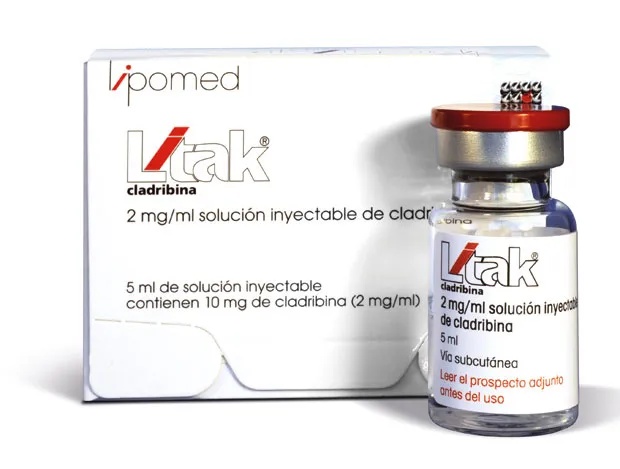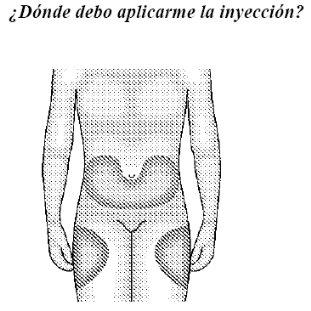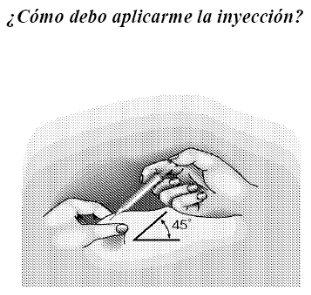
Інструкція із застосування ЛІТАК 2 мг/мл ІН'ЄКЦІЙНИЙ РОЗЧИН
Введення
ОСНОВНІ ВІДОМОСТІ: ІНФОРМАЦІЯ ДЛЯ ПАЦІЕНТА
LITAK 2 мг/мл розчин для ін'єкцій
кладрибін
Перш ніж почати використовувати цей лікарський засіб, уважно прочитайте цю брошуру, оскільки вона містить важливу інформацію для вас.
- Збережіть цю брошуру, оскільки вам можливо буде потрібно ще раз її прочитати.
- Якщо у вас виникли питання, проконсультуйтеся з вашим лікарем або фармацевтом.
- Якщо ви відчуваєте побічні ефекти, проконсультуйтеся з вашим лікарем або фармацевтом, навіть якщо це побічні ефекти, які не вказані в цій брошурі. Див. розділ 4.
Зміст брошури:
- Що таке LITAK і для чого він використовується
- Що вам потрібно знати перед початком використання LITAK
- Як використовувати LITAK
- Можливі побічні ефекти
- Зберігання LITAK
- Зміст упаковки та додаткова інформація
1. Що таке літак і для чого він використовується
LITAK містить активну речовину кладрибін. Кладрибін - це цитостатик, який впливає на зростання злоякісних білих кров'яних клітин (ракових), які відіграють важливу роль у лейкемії волосових клітин (триколімуз). LITAK використовується для лікування цієї хвороби
2. Що вам потрібно знати перед початком використання LITAK
Не використовуйте LITAK
- Якщо ви алергічні на кладрибін або на будь-який інший компонент LITAK (перелічені в розділі 6).
- Якщо ви вагітні або годуєте грудьми.
- Якщо вам менше 18 років.
- Якщо у вас є ниркова або печінкова недостатність середньої чи важкої ступеня.
- Якщо ви приймаєте інші лікарські засоби, які впливають на вироблення кров'яних клітин у кістковому мозку (мієлосупресія).
Попередження та застереження
Проконсультуйтеся з вашим лікарем або фармацевтом перед початком використання LITAK.
У будь-який момент під час або після лікування повідомте вашому лікарю або медсестрі негайно, якщо у вас з'являються розмитий зір, втрата зору або подвійний зір, труднощі з мовленням, слабкість у руці або нозі, зміна вашого способу ходіння або проблеми з рівновагою, оніміння, зниження чутливості або втрата чутливості, втрата пам'яті або сплутаність. Все це можуть бути симптомами важкої та потенційно смертельної мозкової хворобипід назвою лейкоенцефалопатія мультифокальна (ЛМП).
Якщо у вас були будь-які з цих симптомів до початку лікування кладрибіном, повідомте вашому лікарю, якщо ви помітите будь-які зміни в цих симптомах.
повідомте вашому лікарю, якщо у вас є або були:
- Проблеми з нирками або печінкою.
- Інфекції
- Якщо ви захворієте на інфекцію, її потрібно буде лікувати до початку використання LITAK.
- Якщо ви помітите будь-які ознаки інфекції (наприклад, симптоми грипу або гарячка) під час або після лікування LITAK, повідомте негайно вашому лікарю.
- Гарячка.
Перед початком лікування LITAK та під час нього будуть проводитися регулярні аналізи крові для перевірки того, чи можете ви продовжувати лікування без ризику. Ваш лікар може вирішити, що вам потрібно буде отримувати переливання крові для покращення кількості кров'яних клітин. Крім того, буде контролюватися, чи працюють печінка та нирки правильно.
Чоловіки, які бажають мати дітей, повинні повідомити про це свого лікаря перед початком лікування LITAK. Не слід заводити дітей під час лікування та до шести місяців після закінчення лікування LITAK. Ваш лікар може порадити вам щодо можливості зберігання сперми (кріоконсервації).
Інші лікарські засоби та LITAK
повідомте вашому лікарю, якщо ви приймаєте або приймали недавно будь-які інші лікарські засоби, навіть ті, які можна придбати без рецепта. Особливо повідомте вашому лікарю, якщо ви приймаєте будь-які лікарські засоби, які містять:
- Кортикостероїди, які часто використовуються для лікування запалення.
- Антивірусні засоби, які використовуються для лікування вірусних інфекцій.
Не слід використовувати LITAK з іншими лікарськими засобами, які впливають на вироблення кров'яних клітин у кістковому мозку (мієлосупресія).
Вагітність і лактація
Не слід використовувати LITAK, якщо ви вагітні. Ви повинні приймати відповідні заходи контрацепції під час лікування та протягом至少 шести місяців після останньої дози LITAK. Якщо ви завагітнієте під час лікування, негайно повідомте про це вашому лікарю.
Не слід годувати грудьми під час лікування LITAK та протягом至少 шести місяців після отримання останньої дози LITAK.
Відновлення та використання машин
Вплив LITAK на здатність керувати транспортними засобами та використовувати машини є важливим. Якщо ви відчуваєте сонливість, яку може спричинити низька кількість червоних кров'яних клітин через лікування LITAK, або головокружіння, не слід керувати транспортними засобами чи використовувати машини.
3. Як використовувати LITAK
Завжди слідуйте інструкціям щодо використання LITAK, які вказані вашим лікарем. У разі сумнівів проконсультуйтеся з вашим лікарем або фармацевтом.
Ваш лікар розрахує дозу, яку вам потрібно буде прийняти, залежно від вашої ваги та детально пояснить графік лікування. Рекомендована добова доза становить 0,14 мг на кілограм ваги, протягом п'яти поспіль днів (один цикл лікування).
LITAK потрібно вводити під шкіру (підшкірна ін'єкція), приблизно в один і той же час щодня. Якщо ви вводите LITAK самостійно, спочатку вам потрібно буде отримати відповідну підготовку від вашого лікаря або медсестри. Ви знайдете детальні інструкції щодо ін'єкції в кінці цієї брошури.
Ви також можете отримувати додатковий лікарський засіб, який містить активну речовину алопуринол, для зменшення надмірної кількості сечової кислоти.
Якщо ви використовуєте більше LITAK, ніж потрібно
У разі введення неправильної дози негайно повідомте про це вашому лікарю.
Якщо ви забули використовувати LITAK
Не вводьте подвійну дозу для компенсації забутих доз. У разі, якщо ви забули ввести дозу, негайно повідомте про це вашому лікарю.
Якщо у вас є будь-які інші питання щодо використання цього продукту, проконсультуйтеся з вашим лікарем або фармацевтом.
4. Можливі побічні ефекти
Як і всі лікарські засоби, LITAK може спричиняти побічні ефекти, хоча не всі люди їх відчувають.
Негайно повідомте про це вашому лікарю, якщо ви відчуваєте будь-які з наступних симптомів або ознак під час лікування LITAK або після нього:
- Будь-які ознаки інфекції (наприклад, симптоми грипу).
- Гарячка.
Не можна виключити повторне виникнення злоякісної хвороби (раку). Це означає, що ризик того, що ви відчуєте злоякісну пухлину в майбутньому, трохи вищий, ніж у здорових людей. Це трохи підвищений ризик може бути пов'язаний із триколімузом або з лікуваннями, які використовуються для лікування хвороби, включаючи LITAK.
Можливі наступні побічні ефекти:
Дуже часті побічні ефекти (можуть виникнути у більш ніж 1 з 10 пацієнтів)
- Інфекції.
- Гарячка.
- Низька кількість певних білих кров'яних клітин (нейтрофілів та лімфоцитів) та тромбоцитів у аналізах крові.
- Низька кількість червоних кров'яних клітин, що може спричинити анемію, з симптомами, такими як втома та сонливість.
- Зниження функції імунної системи організму.
- Головний біль, головокружіння.
- Аномальні дихальні звуки, аномальні звуки в грудній клітці, кашель.
- Нудота, блювота, запор та діарея.
- Висип, набряк, червоність та біль навколо місця ін'єкції, потіння.
Кутаневі реакції в основному легкі або помірні та зазвичай проходять за кілька днів.
- Втома, озноб, зниження апетиту.
- Слабкість.
Часті побічні ефекти (можуть виникнути у до 1 з 10 пацієнтів)
- Повторне виникнення злоякісної пухлини (раку).
- Низька кількість тромбоцитів, що може спричинити незвичайне кровотечу (наприклад, носові кровотечі або кровотечі на шкірі).
- Сонливість, тривога.
- Збільшення частоти серцевих скорочень, аномальні серцеві звуки, низький артеріальний тиск, зниження кровотоку до серцевого м'яза.
- Труднощі з диханням, набряк легеневого тканини через інфекцію, запалення рота та язика.
- Біль у животі при наявності надмірної кількості газу в шлунку або кишечнику, в основному легке збільшення показників аналізів печінки (білірубіну, трансаміназ), які повернуться до норми після закінчення лікування.
- Висип з свербінням (уртикарія), червоність шкіри та біль.
- Набряк тканин (едем), нездужання, біль (м'язовий біль, біль у суглобах та біль у кістках).
Побічні ефекти, які виникають рідше (можуть виникнути у до 1 з 100 пацієнтів)
- Анемія, спричинена руйнуванням червоних кров'яних клітин.
- Сонливість, оніміння та поколювання шкіри, слабкість, бездіяльність, порушення функції периферійних нервів, сплутаність, порушення координації рухів.
- Запалення очей.
- Біль у горлі.
- Запалення вени.
- Істотна втрата ваги.
Рідкі побічні ефекти (можуть виникнути у до 1 з 1000 пацієнтів)
- Зниження функції печінки.
- Зниження функції нирок.
- Ускладнення, спричинені лікуванням раку через руйнування ракових клітин.
- Реакція відторгнення переливання крові.
- Збільшення кількості певних білих кров'яних клітин (еозінофілів).
- Інсульт.
- Розлади мови та ковтання.
- Серцева недостатність.
- Розлади серцевого ритму.
- Нездатність серця підтримувати адекватний кровотік.
- Закупорка кишечника.
- Алергічна реакція шкіри (синдром Стівенса-Джонсона або синдром Лаєлла).
Дуже рідкі побічні ефекти (можуть виникнути у до 1 з 10 000 пацієнтів)
- Депресія, епілептичний напад.
- Набряк повік.
- Згусток крові в легенях.
- Запалення жовчного міхура.
- Зниження функції органів через високі рівні певної речовини, виробленої організмом (глюкопротеїну).
Звіт про побічні ефекти
Якщо ви відчуваєте будь-які побічні ефекти, проконсультуйтеся з вашим лікарем або фармацевтом, навіть якщо це побічні ефекти, які не вказані в цій брошурі. Ви також можете повідомити про них безпосередньо через національну систему повідомлень, включену до Додатку V. Надсилаючи повідомлення про побічні ефекти, ви можете допомогти надати більше інформації про безпеку цього лікарського засобу.
5. Зберігання LITAK
Тримати поза зоною видимості та досягнення дітей.
Зберігати в холодильнику (між 2 °C та 8 °C). Не заморожувати.
Не використовувати LITAK після закінчення терміну придатності, вказаного на етикетці флакона та на зовнішній коробці після CAD. Термін придатності - останній день місяця, який вказано.
З мікробіологічної точки зору, якщо відкриття продукції не перешкоджає ризику мікробіологічного забруднення, продукт потрібно використовувати негайно. Якщо продукт не використовується негайно, терміни та умови зберігання під час використання є відповідальністю користувача.
Не використовувати LITAK, якщо ви помітите, що флакон пошкоджений, або якщо розчин не є прозорим або містить частинки.
Видалення незастосованого лікарського засобу та всіх матеріалів, які були в контакті з ним, здійснюється згідно з місцевими правилами.
6. Зміст упаковки та додаткова інформація
Склад LITAK
- Активна речовина - кладрибін. Кожен мл розчину містить 2 мг кладрибіна. Кожен флакон містить 10 мг кладрибіна у 5 мл розчину.
- Інші компоненти - хлорид натрію, гідроксид натрію (для регулювання pH), хлоридна кислота (для регулювання pH) та вода для ін'єкцій.
Вигляд продукту та вміст упаковки
LITAK випускається у скляних флаконах, які містять 5 мл прозорого та безбарвного ін'єкційного розчину.
Упаковка містить 1 або 5 флаконів. Можливо, що тільки деякі розміри упаковок будуть випускатися.
Власник дозволу на розміщення лікарського засобу на ринку та відповідальний за виробництво
Lipomed GmbH
Hegenheimer Strasse 2
D-79576 Weil/Rhein
Німеччина
Ви можете запитати додаткову інформацію щодо цього лікарського засобу, звернувшись до власника дозволу на розміщення лікарського засобу на ринку.
Дата останнього перегляду цієї брошури:
Детальна інформація про цей лікарський засіб доступна на сайті Європейського агентства з лікарських засобів: http://www.ema.europa.eu.
ІНСТРУКЦІЇ ДЛЯ ІН'ЄКЦІЇ
Цей розділ містить інформацію про те, як потрібно вводити ін'єкцію LITAK. Важливо, щоб ви не намагалися вводити ін'єкцію самостійно, якщо тільки лікар або медсестра не надали вам інструкцій. Ваш лікар скаже вам, яку кількість LITAK вам потрібно буде ввести та коли вам потрібно буде вводити її самостійно. LITAK потрібно вводити під шкіру (підшкірна ін'єкція). Якщо у вас є питання щодо введення ін'єкції, просіть допомоги в вашого лікаря або медсестри.
LITAK є цитотоксичним та, отже, потрібно обробляти його з обережністю. Коли пацієнт не вводить LITAK самостійно, рекомендується використовувати одноразові рукавички та захисні окуляри при обробці та введенні LITAK. Якщо LITAK потрапляє на шкіру або в очі, негайно промийте уражену поверхню великою кількістю води. Вагітні жінки повинні уникати контакту з LITAK.
Що мені потрібно для ін'єкції?
Для самостійного введення підшкірної ін'єкції вам потрібно буде:
- Флакон LITAK (або два флакони, якщо вам потрібно буде ввести більше 5 мл).
Не використовуйте флакони, якщо вони пошкоджені або якщо розчин не є прозорим або містить частинки.
- Стерильна шприц (наприклад, шприц LUER об'ємом 10 мл).
- Стерильна ін'єкційна голка (наприклад, 0,5 x 19 мм, 25 G x ¾ дюйма).
- Газа/ватна підкладка, змочена спиртом.
- Контейнер, стійкий до колючих предметів, для безпечного видалення використаних шприців.
Що мені потрібно зробити перед ін'єкцією LITAK підшкірно?
- Перед ін'єкцією залиште флакон LITAK при кімнатній температурі.
- Вмиті руки.
- Знайдіть зручне та добре освітлене місце та поставте весь необхідний матеріал у зону досяжності.
Як підготувати ін'єкцію?
Перед ін'єкцією LITAK вам потрібно буде зробити наступне:
- Зніміть захисну кришку з флакона LITAK. Не виймайте гумову пробку з флакона. Промийте гумову пробку ватною підкладкою, змоченою спиртом. Вийміть шприц з упаковки, не торкаючись кінчика. Вийміть ін'єкційну голку з упаковки та вставте її щільно в кінчик шприца. Зніміть захисний ковпачок з голки, не торкаючись голки.
- Вставте голку крізь гумову пробку флакона та переверніть флакон та шприц. Переконайтесь, що кінчик голки знаходиться у розчині.
- Витягніть потрібну кількість LITAK у шприц, потягнувши за поршень (ваш лікар скаже вам, яку кількість мл LITAK вам потрібно буде ввести).
- Вийміть голку з флакона.
- Переконайтесь, що в шприці немає повітря: підніміть голку та виштовхніть повітря.
- Переконайтесь, що об'єм розчину в шприці правильний.
- Введіть розчин негайно.
| На цьому малюнку показані найбільш зручні місця для введення ін'єкції: верхня частина стегон та живота, за винятком ділянки навколо пупка. Якщо ін'єкцію вводить інша людина, вона також може зробити це на зовнішній стороні рук або на сідницях. |
|
|
- Легко потягніть за поршень, щоб переконатися, що ви не влучили в кров'яний судину. Якщо ви бачите кров у шприці, вийміть голку та вставте її в інше місце.
- Введіть рідину повільно та рівномірно протягом приблизно 1 хвилини, тримаючи шкіру потрітою між пальцями.
- Після введення рідини вийміть голку.
- Викиньте використаний шприц у контейнер, стійкий до колючих предметів. Використовуйте новий шприц та голку для кожної ін'єкції. Флакони призначені для одного використання. Віддайте відкриті флакони з залишками незастосованого розчину вашому лікарю або фармацевту для правильного видалення.
Видалення використаних шприців
Викиньте використані шприци у контейнер, стійкий до колючих предметів, та тримайте його поза зоною досяжності та виду дітей.
Видаліть контейнер, стійкий до колючих предметів, згідно з інструкціями вашого лікаря, медсестри або фармацевта.
Не викидайте використані шприци у побутове сміття.
- Країна реєстрації
- Діючі речовини
- Потрібен рецептТак
- Виробник
- Інформація є довідковою і не є медичною порадою. Перед прийомом будь-яких препаратів обов'язково проконсультуйтеся з лікарем. Oladoctor не несе відповідальності за медичні рішення, прийняті на основі цього контенту.
- Альтернативи до ЛІТАК 2 мг/мл ІН'ЄКЦІЙНИЙ РОЗЧИНФорма випуску: РОЗЧИН ДЛЯ ІН'ЄКЦІЙ, 10 мг кладрибіну / 10 млДіючі речовини: cladribineВиробник: Atnahs Pharma Netherlands Bv.Потрібен рецептДіючі речовини: cladribineВиробник: Lipomed GmbhПотрібен рецептФорма випуску: РОЗЧИН ДЛЯ ІНФУЗІЙ, ЩО ВВОДИТЬСЯ ІН'ЄКЦІЙНО, 250 мгДіючі речовини: nelarabineВиробник: Sandoz Pharmaceuticals D.D.Потрібен рецепт
Аналоги ЛІТАК 2 мг/мл ІН'ЄКЦІЙНИЙ РОЗЧИН в інших країнах
Найкращі аналоги з тією самою діючою речовиною та терапевтичним ефектом.
Аналог ЛІТАК 2 мг/мл ІН'ЄКЦІЙНИЙ РОЗЧИН у Польща
Аналог ЛІТАК 2 мг/мл ІН'ЄКЦІЙНИЙ РОЗЧИН у Україна
Лікарі онлайн щодо ЛІТАК 2 мг/мл ІН'ЄКЦІЙНИЙ РОЗЧИН
Консультація щодо дозування, побічних ефектів, взаємодій, протипоказань та поновлення рецепта на ЛІТАК 2 мг/мл ІН'ЄКЦІЙНИЙ РОЗЧИН – за рішенням лікаря та згідно з місцевими правилами.









